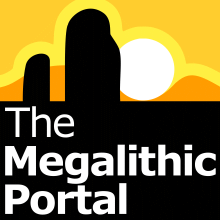Some background from an article published in the Northern Times during the filming last April:
Filming continues today (Friday) at Loch Migdale for a future programme of Channel 4’s popular archaeology series “Time Team”.
A 50-strong unit comprising experts, camera crew, sound recorders, presenters, and production staff, descended on the Bonar Bridge area earlier in the week.
The team are concentrating their efforts on three sites of possible archaeological significance dating back about 4000 years to the Bronze Age. The sites are a suspected crannog, or artificial island in Loch Migdale, a nearby henge and a hut circle.
They are hoping to tie it in with the Migdale Hoard, a group of bronze and jet objects found in a cist at Loch Migdale in 1901.
Speaking to The Northern Times on Wednesday, Time Team presenter Tony Robinson, famous for his role as Baldrick the Oaf in Rowan Atkinson’s “Blackadder” TV series, said it was too early to come to any conclusion.
Time Team were invited along by local couple Rob Jones and Cara Flannigan who own Loch Migdale and the surrounding land. The couple have a house overlooking the loch which the Time Team are using. Mr Jones runs Migdale Trout.
Ms Flannigan, a freelance writer of psychology textbooks, said that since moving to Migdale in 1989 she had been keen to know more about the historical significance of various features on the land.
“I wrote to Time Team some three to four years ago suggesting they pay us a visit and never got a response. I had completely forgotten all about it until I got a phone call from them six months ago,” she said.
“It has just been wonderful watching it all unfolding. It is a mammoth enterprise and they have done their research thoroughly. It is a fabulous opportunity to have a look at these sites here. Migdale and Airdens is an extremely rich area for archaeology.”
Time Team researcher Oliver Twinch explained that a crannog was a small artificial island, or an artificially enlarged natural bedrock outcrop. He said a document written in 1630 by Robert Gordon and entitled the Genealogical History of the Earls of Sutherland, indicated that at that time there was a house on an islet in Loch Migdale.
“In the document Robert Gordon mentions different lochs which had houses on them, one of which was Loch Migdale. There is only one islet on the loch. What we are trying to determine is, is it an artificial island made by people or, in the event it is a natural feature, whether it has been enhanced by people by driving wooden stakes into the bed of the loch to create a wooden platform.”
In charge of the crannog investigation – which involves a diving operation – is Dr Nicholas Dixon who leads the Scottish Trust for Underwater Archaeology. The trading arm of the trust is the Scottish Crannog Centre, a complex at Loch Tay where a full-sized reconstruction of a crannog and display can be visited.
On land near to the islet, Time Team have already uncovered a previous excavation carried out in 1970 by amateur archaeologist Tony Woodham, who on Wednesday was watching the present operation.
Researcher Mr Twinch said Mr Woodham had been trying to discover whether the feature was a hut circle or a henge – a sort of ritualistic monument. He had been unable to find evidence of a hearth in the middle, so assumed it was a henge.
“We are opening his excavation initially to see if his interpretation is correct. We have opened up a quarter of the site and it is visible as a raised ring with a ditch inside.” said Mr Twinch.
Experts are uncertain of the original purpose and function of henge monuments, but because of their arrangement of banks and ditches, it is generally accepted that they are ceremonial or ritual monuments.
Digging has also taken place next to the henge of what was thought could be a burial cist. Excavator Matt Williams said: “We thought it might be a cist burial which are often associated with henges, but it is not looking promising. It turned out to be bigger than we thought and it might possibly be something to do with agriculture.”
The Time Team also intended to look at a hut circle to the right of the henge. Explained Mr Twinch: “We are hoping we will be able to tell the story of the people who lived here at the same time as the Migdale Hoard was deposited.”
Now stored in the National Museum in Edinburgh, the Migdale Hoard has been dated to roughly 2100 BC. It is understood a request from Time Team to borrow it for filming at Loch Migdale was denied.
Today (Friday) is expected to be the last day of filming and Glenmorangie Distillery at Tain are providing drams of whisky for an “end of the day scene” at around 6pm.
It’s the second time in three years that Time Team has visited Sutherland in search of historical remains. In July 2001 an underwater excavation of a site off Loch Laxford, just north of Handa Island, was filmed in the hope of finding a wreck thought to be a galleon from the Spanish Armada. No trace of the ship’s structure was found but divers brought up a treasure trove of rare Spanish and Italian pottery dating back to the 16th century.
Something is not right. This message is just to keep things from messing up down the road
